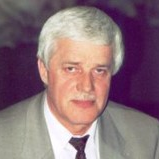Selective Disintegration of Ores and Physicochemical Properties of Minerals Under High-Power Electromagnetic Pulses and Other High Pulsed Powers Effects
A special issue of Minerals (ISSN 2075-163X). This special issue belongs to the section "Mineral Processing and Extractive Metallurgy".
Deadline for manuscript submissions: closed (31 December 2022) | Viewed by 4816
Special Issue Editors
Interests: condensed matter physics; mineral processing; materials science; pulsed-power technologies; applied synergetics; fractals and multifractal analysis; analytical microscopy and spectroscopy
Special Issue Information
Dear Colleagues,
Pulse Electrotechnologies (also referred to as ‘‘Pulsed Power’’) is the mainstream development of various technologies in the last XXI centuries. The effect of superstrong electromagnetic fields on materials is one of the Pulsed Power technological process directions, for example, no thermal action of strong electric fields on medical, biologic, and natural mineral objects. An analysis of modern condition of iron ore, gold-bearing, PGM and rare Earth ores, and other raw materials has shown a negative tendency of reducing the mineral resources extraction and worsening the quality of extracted ores. In the near future, the deposits presented mainly by fine-disseminated and rebellious ores will need to be developed. These ores demand essentially new solutions in the technology and technique of their beneficiation. Under such conditions, the highly efficient and ecology-friendly processing technologies become of the top priority.
The use of energy-saving high-voltage electric discharge technologies in the processing of rebellious minerals allows achieving effective separation of mineral complexes (selective disintegration and dissociation of mineral aggregates) and creating optimal conditions to enhance the contrast of the physicochemical and flotation properties of minerals and subsequent separation during flotation due to the appearance of hydrophobic and hydrophilic nanoformations on their surface.
Modern techniques (methods) of natural media (geomaterials) disintegration and surface modifications, which are closely related to the methods presented in the papers of this Special Issue include non-thermal effect of high-power nanosecond electromagnetic pulses (HPEMP), low-temperature plasma of dielectric barrier discharge (DBD), accelerated electron beam irradiation, pulse microwave frequency treatment, electric impulse treatment, electric hydrodynamic effect, magnetic impulse treatment, special electrochemical treatment, and other methods.
This Special Issue aims to contribute to the disclosure of all the applications of nontraditional (nonmechanical) high-enegetic (pulsed power) methods and technologies that should be created based on the intensification of the current and new approaches to mineral extraction from rebellious ore and mining waste, using the latest achievements of basic sciences and by combining physical, physicochemical, dressing, chemical and metallurgical processes.
Dr. Igor Zh. Bunin
Prof. Dr. Valentine A. Chanturiya
Guest Editors
Manuscript Submission Information
Manuscripts should be submitted online at www.mdpi.com by registering and logging in to this website. Once you are registered, click here to go to the submission form. Manuscripts can be submitted until the deadline. All submissions that pass pre-check are peer-reviewed. Accepted papers will be published continuously in the journal (as soon as accepted) and will be listed together on the special issue website. Research articles, review articles as well as short communications are invited. For planned papers, a title and short abstract (about 100 words) can be sent to the Editorial Office for announcement on this website.
Submitted manuscripts should not have been published previously, nor be under consideration for publication elsewhere (except conference proceedings papers). All manuscripts are thoroughly refereed through a single-blind peer-review process. A guide for authors and other relevant information for submission of manuscripts is available on the Instructions for Authors page. Minerals is an international peer-reviewed open access monthly journal published by MDPI.
Please visit the Instructions for Authors page before submitting a manuscript. The Article Processing Charge (APC) for publication in this open access journal is 2400 CHF (Swiss Francs). Submitted papers should be well formatted and use good English. Authors may use MDPI's English editing service prior to publication or during author revisions.
Keywords
- pulsed power technologies in mineral processing and extractive metallurgy
- selective disintegration and surface modification of geomaterials (rocks, minerals and ores)
- high-power (voltage) nanosecond electromagnetic pulses
- low-temperature plasma of dielectric barrier discharge
- precious metals mineral complexes, recovery, sulfides
- flotation, surface, physicochemical and technological properties of minerals
- future development






